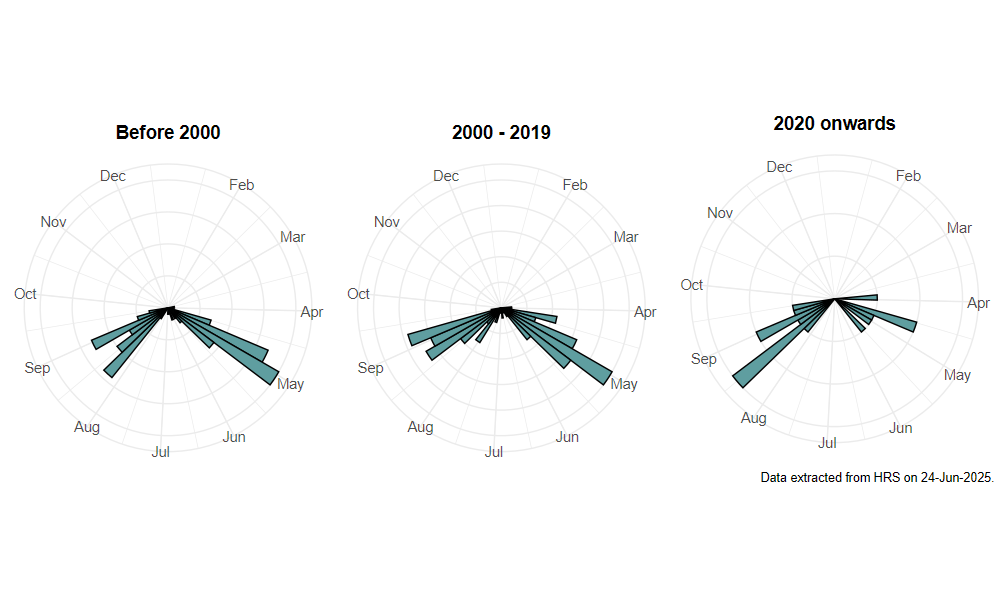Cheilosia griseiventris Loew, 1857
Identification
Identification difficulty = 4. ![]()
![]() according to Ball & Morris, 20241
according to Ball & Morris, 20241
Synonymy
Separated from C. latifrons by Stubbs & Falk (1983)2; the available British voucher specimens are distinctly different from that species, with longer bodies and darker wings. Continental workers question whether this species is distinct from C. latifrons and suspect it may be another species.
Biology
The larva is unknown, but is thought to be associated with yellow composites such as Cat's Ear Hypochoeris radicata. Adults have been found in a variety of locations including sites on chalk, sand and clay soils.
Flight period
The following plots show the number of unique records per week excluding those reported to be of immature stages.

Distribution
Most records lie south of a line between the Tees and the Mersey but there are also two outlying records from northern Scotland. This species rarely occurs in large numbers, often being found as single individuals.

Trends
The following plots show the Frescalo TFactor vs year and a map of the rescaled frequency (all records) for the species.